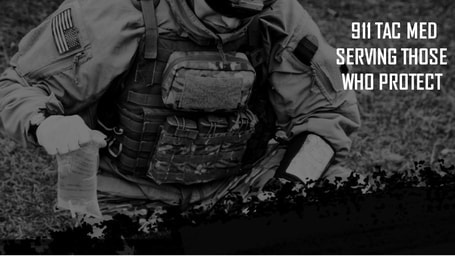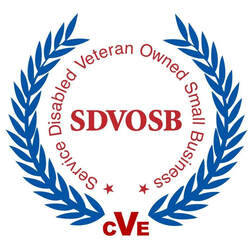MEDICAL FOR LAW ENFORCEMENT OFFICERS
- Law Enforcement Officers and First Responders (TECC-LEO) for CLEET / TCOLE: 4-8 hour classroom course specifically designed for non-EMS first responders. The course covers materials found in the 16-hour provider course at a level appropriate for first responders. It includes 4 hours of core content, with additional modules that can be added to address the needs of specific responders. Upon successful completion of the course, students receive a certificate of completion, a wallet card recognizing them as a TECC-LEO provider for 4 years, and 4-8 hours of CAPCE credit and TCOLE credit.
- With and Without Lanes
- TCCC-AC (TCCC for All Combatants) is a 1-day classroom course for non-medical military personnel and includes first responder skills appropriate for soldiers, sailors, airmen and marines.
- The foundational medical science upon which TCCC is based is published in NAEMT’s PHTLS Military textbook in which the military chapters are written by the Co-TCCC. TCCC, as offered by NAEMT, is the only TCCC course endorsed by the Joint Trauma System and the American College of Surgeons. NAEMT’s TCCC courses are accredited by CAPCE and recognized by NREMT.
NAEMT's TCCC courses are taught by a global network of experienced, well-trained, experienced instructors. To support training centers, instructors and students, NAEMT maintains a network of tactical affiliate faculty both in the U.S. and internationally, and staff at its Headquarters Office. - With and Without Lanes
TECC for Law Enforcement Officers and First Responders (TECC-LEO)
TECC for Law Enforcement Officers and First Responders (TECC-LEO): An 8-hour classroom course specifically designed for law enforcement officers and other non-EMS first responders. The course covers materials found in the 16-hour TECC provider course at a level appropriate for first responders. It includes 8 hours of content, which includes interactive lectures, skill stations, and patient simulations. Upon successful completion of the course, students receive a certificate of completion, a wallet card recognizing them as a TECC-LEO provider for 4 years, and 8 hours of CAPCE credit for qualified participants.
The course combines the principles of PHTLS and Tactical Combat Casualty Care (TCCC), with the training provided to military medics by all branches of our Armed Services. It is consistent with the Tactical Emergency Casualty Care (TECC) guidelines, and meets the recommendations of the Hartford Consensus Document on Improving Survival from Active Shooter Events.
Course participants will learn life-saving medical actions such as bleeding control with a tourniquet, bleeding control with gauze packs or topical hemostatic agents, and opening an airway to allow a casualty to breathe.
Upon completion of the course participants will:
- Understand the rationale for immediate steps for hemorrhage control (including external hemorrhage control, direct pressure and wound packing, early use of tourniquet for severe hemorrhage, internal hemorrhage control by rapid evacuation, and transportation to major hospital/trauma center.
- Demonstrate the appropriate application of a tourniquet to the arm and leg.
- Describe the progressive strategy for controlling hemorrhage.
- Describe appropriate airway control techniques and devices.
- Demonstrate the correct application of a topical hemostatic dressing (combat gauze).
- Recognize the tactically relevant indicators of shock.
TCCC-ASM (TCCC All Service Members – Tier 1) is a 7-hour course for all service members.
Description: The combat casualty care experience of the 75th Ranger Regiment in Operations Iraqi Freedom and Enduring Freedom demonstrated that many lifesaving interventions on the battlefield can be delivered by non-medical personnel, either in support of the combat medic or in his or her absence. Both the Ranger Regiment and the Canadian Armed Forces have identified their all-combatant TCCC training programs as key elements in their unprecedented success in reducing preventable death on the battlefield.
In acknowledgement of this fact, military medical leaders have requested that the Joint Trauma System develop a TCCC curriculum to train non-medical military personnel.
TCCC All Service Members (TCCC ASM) is a 7-hour course for all service members that teaches TCCC concepts and lifesaving skills to render basic medical aid to a trauma casualty.
Examples of included elements of care are such items as limb tourniquets, hemostatic dressings, nasopharyngeal airways, recognition of hemorrhagic shock, hypothermia prevention, oral antibiotics and analgesics, and eye shields. These topics are discussed in lay language insofar as possible.
Tactical Combat Casualty Care All Service Members (TCCC ASM) curriculum developed by the Joint Trauma System, part of the Defense Health Agency. It is intended to familiarize military personnel with TCCC concepts and basic lifesaving skills to ensure they are adequately prepared to render medical aid to a trauma casualty. Instruction includes basic hemorrhage control skills and recognition of more serious injuries.
Length: 7-16 hours
Target Audience: Non Medical Military Members, Non Medical Tactical Team Members, Law Enforcement / Police

